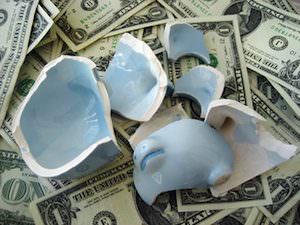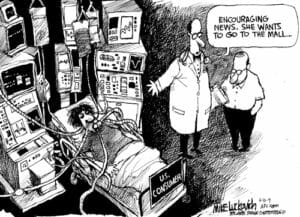Robust U.S. Hiring Underscores Economy’s Momentum
More than a quarter of a million jobs were added in November, and unemployment stays at a 17-year low of 4.1 percent.WASHINGTON — U.S. employers added a substantial 228,000 jobs in November, a sign of the job market’s enduring strength in the economy’s ninth year of expansion, and the unemployment rate held at a 17-year low of 4.1 percent.
Friday’s jobs report from the government made clear that the U.S. economy is on firm footing and is likely benefiting from more resilient global growth, with all major economies across the world expanding in tandem for the first time in a decade.
Over the past six months, U.S. economic growth has exceeded an annual rate of 3 percent, the first time that’s happened since 2014. Consumer confidence has reached its highest level since 2000. And employers have added jobs for 86 straight months, a record streak.
“It’s a surprisingly strong report given the age of the recovery,” said Jed Kolko, chief economist at the job listing website Indeed. “After 86 months, we’re still seeing strong payroll gains.”
In many cases, in fact, employers say they’re struggling to find enough qualified workers to hire. Still, solid hiring and a low unemployment rate have yet to accelerate wages, which rose 2.5 percent in November compared with a year earlier. The last time unemployment was this low, average wages were growing at a 4 percent annual rate.
The November jobs data make it a near-certainty that the Federal Reserve will raise short-term interest rates for the third time this year when it meets next week, economists said.
Last month, job growth was widespread and particularly strong in manufacturing, which added 31,000 jobs, and in construction, which added 24,000. The construction job gains might have reflected, in part, renovation and repair work in such hurricane-ravaged states as Texas and Florida.
In November, retailers added nearly 19,000 jobs, a sign that physical stores are hiring for the holiday shopping season even in the face of brutal competition from e-commerce companies. Transportation and warehousing companies, which are benefiting from the e-commerce boom, added 10,500.
Hiring has slowed slightly since last year, which is typical when unemployment falls to low levels. Employers have added an average of 174,000 a month this year, a bit below last year’s monthly average of 187,000.
There are also welcome signs that the recovery is finally benefiting workers who were seeing little gains in earlier stages of the rebound, Kolko said.
Workers with just a high school diploma are much more likely to have jobs than they were a year ago. And employees in some of the lower-paying industries are receiving the biggest pay gains: Average hourly pay has risen a healthy 3.8 percent for workers in a category that includes hotel and restaurant employees.
“In a tight labor market, employers may look to a wider set of candidates than they would when unemployment was higher,” Kolko said.
Brian Ernest, who owns a small home renovation and contracting firm in Edgewater, Maryland, just hired a project manager to help him keep up with his fast-growing business. He advertises through the Thumbtack website and relies on word of mouth among Realtors.
“Everything in this area is going great,” he said.
Homeowners are borrowing against retirement funds that are flush from stock market gains to renovate their homes, Ernest said. Others are able to obtain home equity lines of credit and other loans.
Rising confidence among consumers is translating into major purchases: Americans are buying more homes and cars. Auto sales rose 1.3 percent in November compared with a year earlier, to 1.4 million, according to Autodata Corp.
In October, newly built homes sold at their fastest pace in a decade, and existing homes sold at their quickest rate since June.
Businesses are spending more, too: Orders for such long-lasting items as industrial machinery, computers and oil-drilling equipment rose for the third straight month in October.
Though wages have yet to pick up, Ian Shepherdson, chief economist at Pantheon Macroeconomics, said he thinks a continued decline in unemployment will lead to higher pay. U.S. metro areas with unemployment rates of 3.5 percent or lower are reporting annual wage growth of roughly 4 percent, Shepherdson said in an email.
___ AP Economics Writer Josh Boak contributed to this report.
Your support matters…Independent journalism is under threat and overshadowed by heavily funded mainstream media.
You can help level the playing field. Become a member.
Your tax-deductible contribution keeps us digging beneath the headlines to give you thought-provoking, investigative reporting and analysis that unearths what's really happening- without compromise.
Give today to support our courageous, independent journalists.





You need to be a supporter to comment.
There are currently no responses to this article.
Be the first to respond.